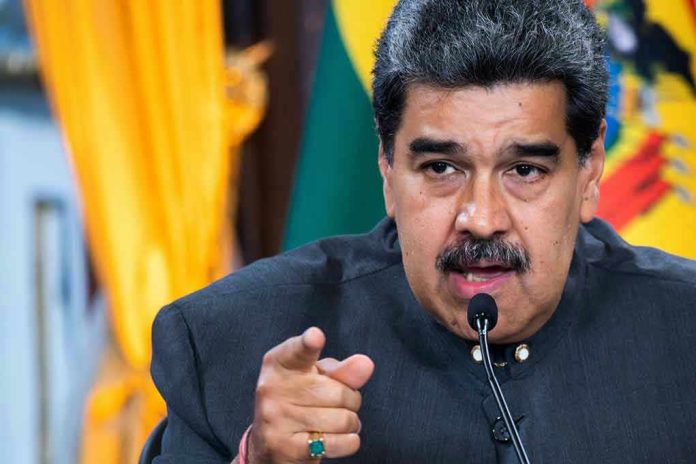
Venezuela just announced it’s mobilizing nearly 200,000 soldiers in direct response to America’s largest aircraft carrier prowling Latin American waters, escalating what could become the most serious military standoff in the Western Hemisphere since the Cuban Missile Crisis.
Story Snapshot
- Venezuela deploys massive 200,000-soldier mobilization citing U.S. aircraft carrier presence
- Largest military buildup represents direct challenge to American naval power in region
- Escalating tensions signal potential for serious Western Hemisphere conflict
- Strategic implications extend far beyond bilateral dispute between two nations
Military Chess Match in Caribbean Waters
The Venezuelan government’s announcement Tuesday evening represents more than typical saber-rattling between adversarial nations. President Nicolás Maduro’s regime has ordered what officials describe as a “massive deployment” of military forces, directly linking this unprecedented mobilization to the presence of America’s largest aircraft carrier operating in nearby waters. This response suggests Venezuela views the U.S. naval presence as an existential threat requiring immediate military countermeasures.
The scale of Venezuela’s military response deserves serious attention. Mobilizing 200,000 soldiers represents a significant portion of the country’s total military capacity and indicates Maduro’s government believes this confrontation could escalate beyond diplomatic posturing. Such deployments require substantial resources and logistical coordination, suggesting this isn’t merely theatrical but represents genuine preparation for potential conflict scenarios.
Strategic Implications Beyond Bilateral Tensions
This military standoff carries implications extending far beyond Venezuelan-American relations. Other regional powers including Colombia, Brazil, and Guyana are watching these developments closely, particularly given Venezuela’s ongoing territorial disputes with neighboring countries. The presence of American carrier strike groups traditionally projects power and reassures allies, but in this case appears to have triggered the opposite response from Caracas.
Venezuela’s military capabilities, while substantial in numbers, face significant challenges including equipment maintenance, fuel shortages, and economic constraints that have plagued the country for years. However, the regime’s willingness to deploy such massive forces suggests either genuine confidence in their military readiness or desperation to project strength during a period of internal political and economic turmoil.
Historical Context and Regional Stability
The current escalation recalls Cold War-era tensions when superpower rivalries played out through Latin American proxy conflicts. Venezuela’s increasingly authoritarian government has cultivated relationships with Russia, China, and Iran, potentially complicating any military confrontation with multilateral dimensions. These alliances could provide Maduro’s regime with diplomatic cover and possibly military support during heightened tensions with Washington.
Regional stability hangs in the balance as neighboring countries must navigate between maintaining neutrality and protecting their own security interests. Colombia, sharing Venezuela’s longest border, faces particular challenges given its strong alliance with the United States and ongoing security concerns related to drug trafficking and refugee flows from Venezuelan economic collapse.
Assessment of Venezuelan Military Response
Venezuela’s decision to publicize this massive troop deployment reveals important strategic calculations by Maduro’s government. Rather than responding through diplomatic channels, the regime chose public military mobilization as its primary response mechanism. This approach suggests either confidence in their military capabilities or an attempt to rally domestic support by portraying external threats.
The timing of this confrontation raises questions about broader geopolitical factors influencing both nations’ strategic decisions. American aircraft carrier deployments follow established patterns of power projection, but Venezuela’s interpretation of these movements as threatening enough to warrant 200,000-soldier mobilization indicates either intelligence suggesting imminent action or miscalculation of American intentions in the region.



